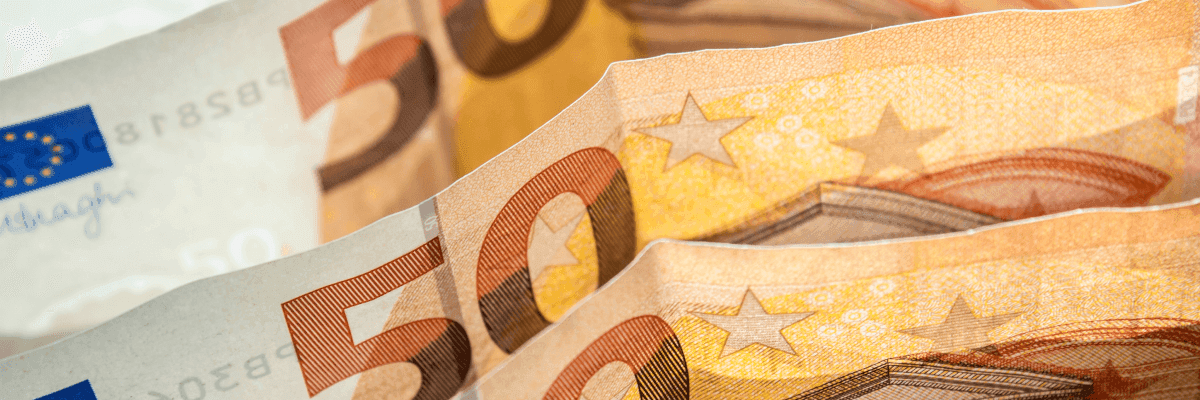In the realm of financial transactions, understanding the limitations of cash withdrawals from bank accounts is essential. As we navigate a world of evolving banking practices and heightened security measures, the question arises: How much cash can you withdraw from a bank?
In this article, we will explore the intricacies of cash withdrawal ceilings imposed by banks.
By gaining insight into this often-overlooked facet of banking, you will be able to better comprehend the delicate balance between convenience, security, and financial prudence.

ATM withdrawal limits: Why do banks have them?
Banks and other financial institutions implement ATM withdrawal limits for practical and security reasons.
ATMs have cash capacity constraints, and banks must manage cash distribution efficiently. Enforcing withdrawal maximums per customer enables better control over available cash.
In essence, ATM withdrawal limits, despite any inconvenience, play a pivotal role in safeguarding your funds. If unauthorized individuals acquire your debit card and PIN, these limits prevent them from withdrawing cash and depleting your accounts.
This precaution becomes crucial, especially considering the rise of contactless payment options that bypass PIN entry. Moreover, ATM limits act as a deterrent against fraudulent activities.
Daily ATM withdrawal limits
Daily ATM withdrawal limit may vary based on the bank or credit union you’re associated with, as each establishment defines its policies.
The daily limit typically spans between $300 to $2,500 per day, though there isn’t a universal standard. The specific cap is influenced by factors such as your bank account type and banking history.
These restrictions are usually calculated on a per-day basis, tailored to balance convenience and security.
However, your ATM withdrawal daily limit remains subject to the financial institution’s discretion. Whether you’re a new bank account holder or a long-standing customer with premium or specialized accounts, your withdrawal limit will be reflective of your banking profile.
Moreover, some ATMs further curtail the cash available per withdrawal. It’s vital to distinguish between daily ATM cash withdrawal limit and daily purchase limit, as they may not align.
One-time ATM withdrawal limit
The one-time ATM withdrawal limit refers to the maximum amount of cash you can withdraw in a single transaction from an ATM.
ATM withdrawal restrictions encompass a range of cash amounts, typically spanning from $300 to as much as $1,000, facilitating transactions over 24 hours.
However, while your ATM withdrawals might be capped at $400, your debit card could be authorized for up to $4,000 in daily purchases. These intricate limits collectively aim to streamline banking operations while upholding the security of your finances and accounts.
Moreover, unlike a checking account, a savings account doesn’t bear monetary withdrawal limits, but federal government law mandates a maximum of six monthly withdrawals from these accounts.
Tips for large cash withdrawals
Basically, if you want to withdraw a large amount of cash, there will be questions. Banks often inquire about the rationale behind a substantial withdrawal or large cash transactions.
However, when it comes to the routine reporting process, there’s generally no need for concern if your actions are within the bounds of the federal reporting requirements.
Nonetheless, if you’d rather sidestep such reporting, there are alternative ways to access your funds. Given that this reporting primarily pertains to cash withdrawals, several options are available:
- You can opt for the traditional route of writing checks for purchases that exceed $10,000.
- Another avenue involves using your credit card for substantial transactions and subsequently settling the balance before the billing cycle ends.
- For scenarios like purchasing a vintage car, arranging a direct bank transfer from your account to the seller’s is a viable choice.
However, if you find yourself contemplating a sizable withdrawal, here are some valuable tips to ensure a seamless process:
- Maintain open communication and cooperation with your bank.
- Be proactive in disclosing all essential information required by your bank.
- Complete any necessary forms and provide the appropriate identification.
- It’s advisable to avoid making significant withdrawals in smaller increments below $10,000, as this could inadvertently raise suspicions related to potential structuring and money laundering.
FAQ
How do I find out my ATM withdrawal limit?
Discovering your maximum ATM withdrawal limit is a straightforward process. Typically, the documents given to you during bank account opening, along with your debit card, outline this limit.
However, for convenient access to this information, you can log into your online or mobile banking app. In case the limits aren’t explicitly stated, a direct call to your bank will allow you to inquire about your ATM withdrawal cap per transaction analysis.
How do I withdraw a large amount of cash from my bank?
Withdrawing a substantial amount of cash from your bank involves several steps to ensure a smooth and secure process:
- Contact your bank: Reach out to your bank or visit a bank branch ahead of time to inform them about your intent to make a large withdrawal. This helps them prepare and ensures that they have sufficient cash on hand.
- Check withdrawal limits: Verify your bank’s policies regarding large ATM withdrawals. Some banks may have specific procedures for withdrawals beyond a certain limit.
- Identification: Make sure to bring valid identification documents, such as a driver’s license or passport. This is to ensure your identity and comply with anti-money laundering regulations.
- Fill out forms: You might need to complete withdrawal forms, especially for significant amounts. These forms help the bank track the transaction and maintain accurate records.
- Be prepared to explain: Depending on the bank’s policies, they might inquire about the purpose of the withdrawal. Being prepared to explain the reason can help expedite the process.
The bank may have security measures in place for large withdrawals. This could include additional verification steps or even an armed guard accompanying you to your car.
Moreover, before leaving the bank, make sure to count the cash you’ve received. Also, request a receipt for the withdrawal, which documents the transaction for your records.
If you need to travel with the withdrawn cash, take appropriate security measures. Use a secure bag or wallet, and consider not carrying all the cash at once.
Keep in mind that large cash withdrawals might attract attention from tax authorities. It’s a good idea to be aware of any reporting requirements.
Do you have to tell the bank why you are withdrawing money?
If the amount surpasses the thresholds outlined for anti-money laundering reporting, the bank is obliged to engage in dialogue with you.
Their objective is to gather the necessary information for the transaction report they are mandated to file.
However, it’s essential to recognize that your response is voluntary, and answering is not a prerequisite for proceeding with the withdrawal.
What is the highest ATM withdrawal limit?
For now, Morgan Stanley Bank offers the largest ATM withdrawal limit in general, ranging from $1,500 to $5,000. However, in Canada, there are no standard withdrawal limits for ATMs at any bank. Instead, ATM withdrawal restrictions are determined by a variety of criteria.
Nonetheless, ATM withdrawal restrictions might differ depending on the sort of account you have and your banking connection, regardless of the bank.
Does it cost to withdraw cash from a credit card?
Credit card cash advances are a convenient method to make sure you can withdraw money when you need it, but they come with additional fees. Expect ATM cash advance fees and increased interest rates on withdrawals.

